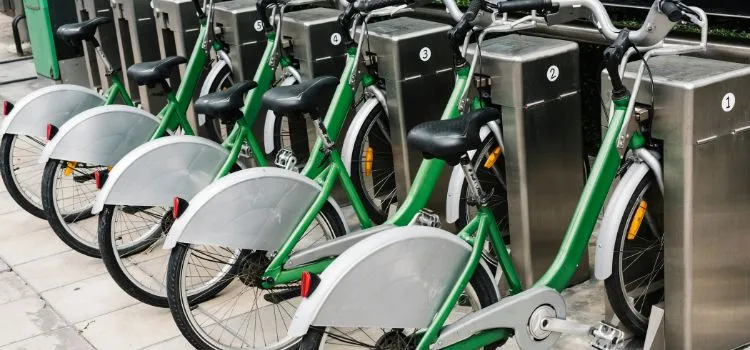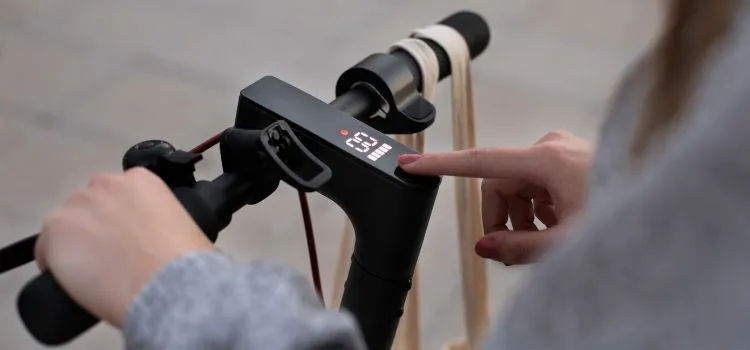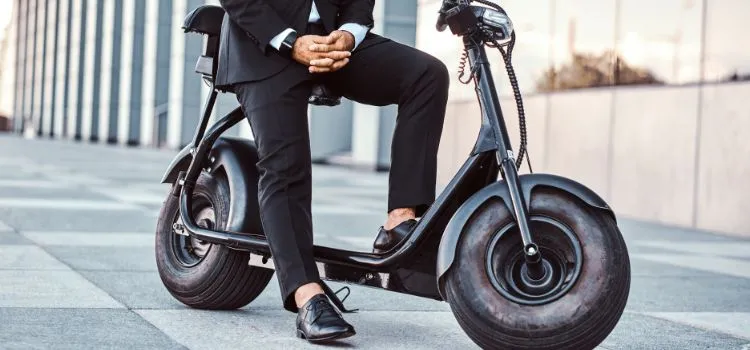How Much Time Does It Take An Electric Bike To Charge?

According to the battery type utilized, powering electric bike batteries can take ranging from two to five hours. It is a simple and rapid operation. If you own one, you probably already know how practical an electric bike is for traveling. Despite the fact that you just use your electric bike for leisure activities, you are well aware that it has to have its battery fully energized in order to function.
Table of Contents
Short Answer
How long does it take to charge an electric bike, you must be wondering? To ultimately charged a battery from zero to complete can take somewhere between two and six hours. The size and kind of battery affect how it operates in real-time. As an illustration, it requires 3.5 hours to fully charge a 400Wh electric bike battery, which is frequently used. In 1.5 hours, you will reach fifty percent of your charge. It is recommended to charge a fresh electric bike battery for the first three times for an entire 10 hours in order to restore the battery to its optimum level.
Although it seems easy to understand, there are techniques to extend battery life while improving the battery’s overall life expectancy, just like with most of our modern electronic equipment. Beyond merely connecting and disconnecting your battery pack, there are several more things to take into account.
How Long Does It Take To Charge An Electric Bike?
The capacity and dimensions of the battery, in addition to the electrical voltage of your electric outlet, are the primary components that affect how long does it take to charge an electric bike. In general, bigger batteries that have greater voltages take more time to charge, while smaller batteries with lower volts can be completely energized quickly.
The lithium-ion battery is now the most frequent type of battery used in electric bicycles. This battery usually requires two to five hours to charge, in accordance with its size and voltage. The majority of lithium-ion batteries employed in electric bikes have a 36-volt system and can be charged using an everyday 110 to 120-volt outlet.
If your battery has a voltage system that is greater, such as a 48-volt system, the procedure of charging will take more. A 48-volt system can be fueled anywhere between four and seven hours, in accordance with the battery’s size and power.
Things To Keep In Mind While Charging An Electric Bike:

Talking about how long does it take to charge an electric bike, here are several things to consider while charging your electric bike:
- The Battery capacity:
It is essential to understand the battery capacity of your electric bikes. You have to understand the type, size, and power of your bike so you can more appropriately charge it. This will help you determine how long it will take to charge it fully.
- The types of batteries:
There are several types of batteries, such as lithium-ion, nickel-cadmium, as well as lead-acid. Each type has it’s charging individual charging requirements. So you must follow the manufacturer’s instructions and must read the manual provided by the manufacturer when you purchase a new one.
- The time required for charging:
The charging time for each electric bike’s battery varies based on the battery’s capacity and the charger’s output. Some battery chargers may require more time to charge, whereas others might charge the battery more quickly.
- The charging frequency:
It is recommended to charge an electric bike battery after each use and ride. Moreover, if you ride your electric bike not that often, it is better to charge it at least once after every thirty days. It will help to prevent the battery from draining entirely.
- The charging place or outlet:
It is essential to consider the fact you have to charge your electric bike in a secure and clean location, away from direct sun rays, excessive heat, and humidity. This will enable you to prevent any damage to the battery and the charger of your electric bike.
- Charging Compatibility:
Always use the genuine bike charger that comes with your electric bike from the manufacturer. Employing an electric bike charger that is not compatible with your battery can prove to be hazardous for the battery or can also cause a fire.
- Proper battery upkeep and care:
Regular upkeep and maintenance of the battery can successfully extend its actual lifespan. This involves keeping the battery totally clean, making sure it is never overcharged or undercharged. Moreover, always remember to store it in a calm, secure, and dry location.
By considering all these essential factors, you can make sure that your electric bike battery is charged securely and efficiently. In this way, you can prolong your bike’s actual lifespan, and you can also enjoy your bike rides with peace of mind and proper enjoyment.
Are There Any Alternative Ways To Operate And Charge An Electric Bike?

Yes, in addition to charging the battery, an electric bike can also be powered in other ways. If you’re searching for a more environmentally friendly option to charge your e-bike, think about installing solar energy systems.
You may produce enough electricity to fuel your journey without depending on conventional plug-in chargers by connecting solar energy systems straight to your electric Bike battery.
In addition, a hand-crank generator can be used to power your electric bikes. This kind of generator generates electricity and charges the battery using the force generated by the rotary motion of your body.
The fact that hand crank generators don’t need a different power system makes them ideal for lengthy journeys, but their charging times are longer than those of standard chargers.
You can use an engine hub to power your electric bike if you don’t have access to solar energy systems or hand crank generators. In order to charge the Batteries, a dynamo hub transforms the energy produced by pedaling into electricity. It is an excellent choice for bike riders who want to lessen their dependence on plug-in charges.
How Much Time Does It Take To Charge An Electric Bike Battery?

For electric vehicles such as electric bikes, the range on a full charge can vary widely depending on the manufacturing and version of the vehicle. It also depends on the driving conditions, which may include the bike’s speed, different terrain, and external temperatures.
Some electric vehicles have a range of less than 100 miles on a single charge, whereas others can go over 300 miles. It is essential to note that the distance coverage of an electric vehicle, such as an electric bike, can also be influenced by factors such as climate conditions, driving techniques, and the employment of climate control systems.
Simple Ways To Enhance Electric Bike Batteries:
There are several ways to automatically enhance the battery life of electric bikes, some of which are listed as follows:
- Choose a high-quality battery:
Always Invest in a high-quality and powerful battery with a high energy density and overall life longevity. Lithium-ion batteries are the most common and best types of electric bike batteries employed in the majority of countries.
- Always keep your bike battery charged:
Charge your bike batteries daily, and never let them run down or drain entirely to the lowest levels. Ideally, it would be best if you charged your battery after each ride and riding journey.
- Use the proper charger:
Always use the bike charger that comes with your electric bike from the providers or a compatible, genuine charger recommended by the electric bike manufacturers. Avoid utilizing cheap or third-party bike chargers, as they may significantly harm your bike as well as its battery.
- Modify your riding style:
Keep in mind to prevent sudden acceleration, sudden braking, steep inclines, and riding on steep hills. This is advised as these can drain your electric bike’s battery quickly. Instead, try to maintain a constant pace and use pedal-assist mode whenever possible.
- Reduce weight:
The more weight your electric bike has, the more pressure it exhibits on the bike’s battery. Remove any extra and unimportant accessories, and carry only what you need throughout the journey or leisure riding.
- Keep your tires properly inflated:
Proper tire inflation can decrease the rolling resistance and make your electric bike more efficient. It can help to extend your bike’s overall battery life.
- Avoid high temperatures:
Extreme temperatures, either hot or cold, can highly damage your battery and reduce its actual lifespan. Avoid leaving your electric bike in direct sunlight or extreme cold, as it can damage not only its appearance and aesthetics but also its working capability.
By following these helpful tips, you can help to improve the battery life of your electric bike and get the best out of your rides and traveling journeys.
How Much Electricity Is Required To Charge Your Bike’s Battery?

The amount of electricity it takes to charge a battery depends on the capacity of the battery of the bike. (It is measured in watt-hours or kilowatt-hours) and also take into account the efficiency of the charging process.
For instance, if you have a 10 kWh battery and you want to recharge it from 0 percent to 100 percent charging, it would need 10 kWh of electricity. However, in practice, the charging procedure is not 100 percent efficient, as most power is lost as heat during the charging process. Therefore, it would ultimately take slightly more than 10 kWh of electricity to charge the battery completely.
It is also essential to note that the time it takes to charge a battery can also vary based on the charging technique and the current state of charge of the battery. Frequently rapid charging methods, such as DC fast charging for electric bikes, can charge a battery much more quickly than slower charging methods, but they may also be less efficient and create more heat. In Addition, charging times can be longer if the battery is partially charged, as the charging rate may slow down as the battery approaches total capacity.
FAQs:
Does pedaling an electric bike charge it in any way?
The majority of electric bikes don’t charge when you cycle, in general. For electricity, they require plugging into an electrical socket with their batteries in place. However, some models allow you to charge while pedaling, though this is frequently very ineffective and not long-lasting.
Is daily recharging of an electric bike okay?
Avoid leaving your battery connected to the bike charger for extended periods. It is unnecessary and may result in a quick discharging and recharging cycle, which will eventually cause the capacity to drain.
Check for the battery charging once a month and partially recharge the battery when it falls below 30 percent if you plan to leave the bike still for an extended amount of time.
What is the range of a 250w electric bike?
Most electric bike motors have been evaluated at 250 watts, while electric bike batteries generally begin at a capacity of roughly 250 watts-hours.
So in this instance, theoretically, if your motor were operating at total energy, your battery would be discharged in an hour. Based on how quickly you bike, you can travel up to 15 miles (24 km) in that time.
How long does a battery charge last on an electric bicycle?
If you take good care and maintain the battery of the bike, and it’s a good quality battery, you could obtain up to 1,000 total charges before the cells start to deteriorate.
An electric bike battery can withstand 1,000 charge cycles. However, your electric bike’s battery type also plays a role in this.
Conclusion:
Now that you know how long does it take to charge an electric bike. In general, you can also increase the time of your bike’s battery by taking special care and following all the preventive measures that can result in any problematic issue in the coming years.
